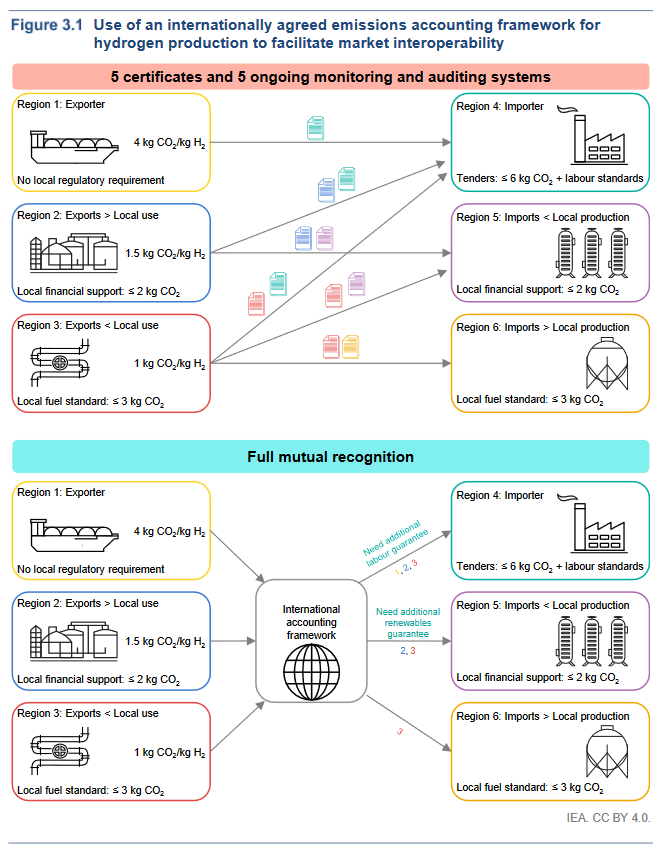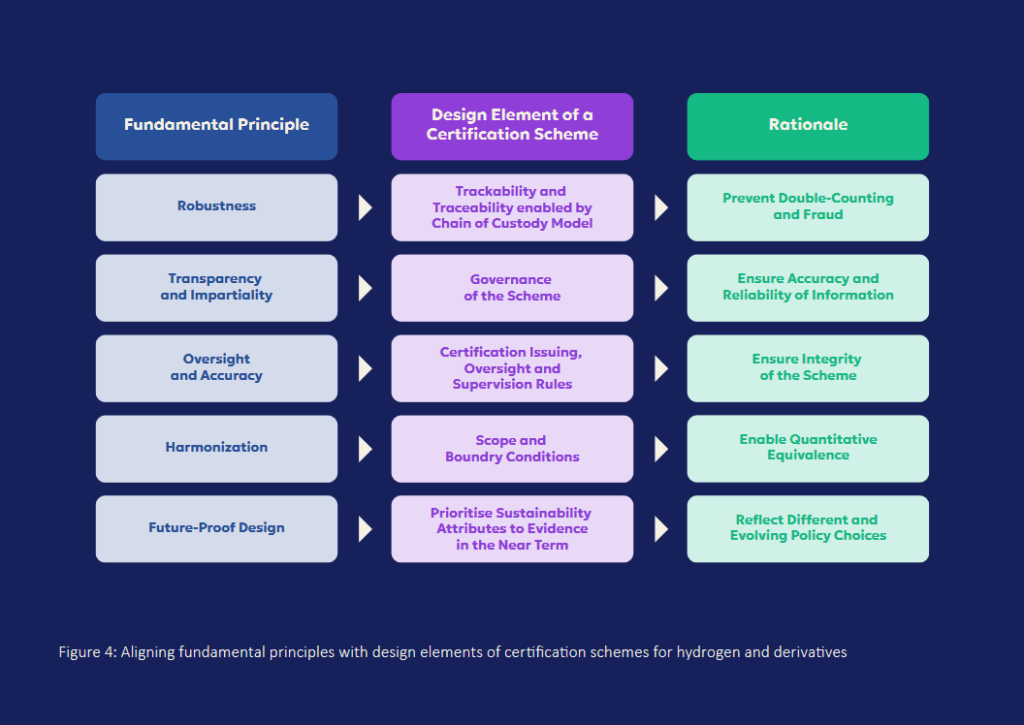Certification 101: New Hydrogen Council Report
By Oscar Pearce on August 29, 2023

The Hydrogen Council, has released a new report – Hydrogen Certification 101 – with support from IRENA and the International Power-to-X Hub. The report summarises key terminology and concepts while providing a snapshot of possible solutions to the complex challenges of certification.
Mutual recognition an important solution
Mutual recognition features prominently in the report as a mechanism for enabling global alignment in the emerging certification landscape. Currently, producers must “have their products certified for each importing country/region individually”, contributing to significant “administrative burden and delays”. The report warns that this trend towards “fragmented compliance markets” will “effectively preclude the development of a global market for hydrogen”. This report is just the latest publication to identify this dilemma. IRENA, for example, has previously criticised the “patchwork” status quo.
The report advises policymakers to embrace mutual recognition as a solution to fragmented certification schemes. While “global harmonization of certification” or “a single new global [certification] scheme” would be desirable, these objectives are only “attainable in the longer run due to existing differences in hydrogen policies and regulations around the world”. In the meantime, mutual recognition “provides for a commonly agreed approach to evidencing, tracking and tracing, and recognising attributes of hydrogen and its derivatives”. Mutual recognition involves hydrogen producers being permitted to use the certification schemes of their exporting jurisdiction to satisfy the requirements of their importing jurisdiction. Unlike full harmonisation, however, mutual recognition empowers policymakers to be flexible in responding to their domestic context:
Pursuing mutual recognition of certification schemes is a promising way forward as it enables convergence on the fundamentals of certification scheme design, while factoring in specific policy objectives and choices of different countries and, as a consequence, compliance requirements impacting certification schemes.
From Hydrogen Certification 101 (Hydrogen Council, Jul 2023)

An IEA report released earlier this year provided further details on mutual recognition in practice. That report illustrated how mutual recognition empowers individual nations to set different emissions intensity limits and add further socioeconomic metrics (e.g., labour standards) while avoiding the need for discrete certification systems in each jurisdiction. Figure 3.1 (see left) from the IEA’s report provides a useful visual summary of the merits of mutual recognition.
The IEA report and the Hydrogen Council’s recent publication are also aligned in their vision of the most promising pathway to mutual recognition. Both point to the IPHE as the logical forum, given the work it has already done to develop an emissions accounting methodology. The IEA report notes that such a process could draw inspiration from the mutual recognition of biofuel certification schemes facilitated by RED II, with the IPHE methodology (or components within it) playing the equivalent role as a baseline.
Proposed design principles

Another contribution made by the Hydrogen Council’s report is on the topic of design principles for certification schemes. The report proposes five “fundamental” principles, mostly sourced from ISO 14067, which are largely consistent with emerging schemes. The report takes the further step, however, of discussing how these principles can translate to practical measures.
For example, the report describes how “transparency and impartiality” can be furthered by “stakeholder engagement and consultation”, “third-party Certification Bodies”, and “complaints, appeals and grievances procedures”, amongst other measures. The complete list of suggestions provided in the report is a useful resource for policymakers seeking to establish effective certification schemes.
You can find the full Hydrogen Certification 101 report here.